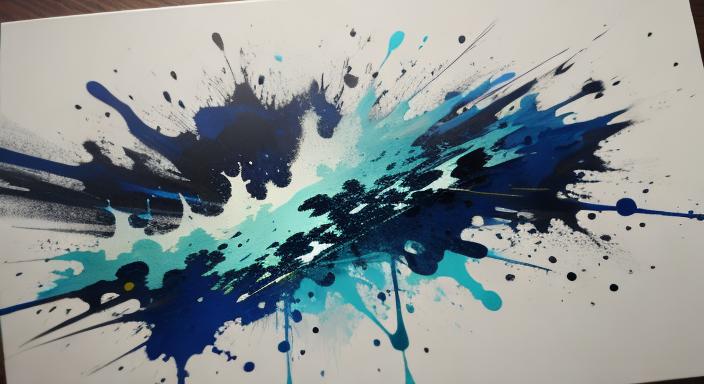Discovering an unknown painting or artist can be an exciting journey into the world of art history and valuation. For instance, imagine finding an old painting in your attic with an intriguing signature that hints at a story waiting to be unraveled.
Whether you’ve inherited a mysterious piece or stumbled upon a hidden gem at a thrift store, uncovering its origins can be both a thrilling and educational process. This comprehensive guide will help you navigate the steps to identify unknown artists and paintings effectively.
Step 1: Research Signatures on Paintings
The artist’s signature is often the most direct clue to identifying a painting. Here’s how you can approach this crucial step:
- Inspect the Painting Closely: Carefully examine the painting for any signatures, monograms, or initials. These might be found on the front, back, or even the edges of the canvas. Use a magnifying glass if needed to spot faint markings.
- Compare with Online Databases: Utilize specialized databases like Artist Signatures and Artnet. Artist Signatures allows you to search by initials or monograms, while Artnet provides access to auction results and detailed artist biographies. By matching your painting’s signature to records in these databases, you can narrow down potential artists.
- Consider Style and Time Period: The style of the signature can also provide hints about the painting’s era. For instance, Victorian artists often used elaborate cursive, while modern artists might opt for minimalistic initials.
Pro Tip: If the signature is partially illegible or worn, try searching for similar styles or initials to guide your research.
Step 2: Use Tools and Websites for Identifying Artist

Modern technology makes it easier than ever to identify unknown paintings. These tools can save you time and effort:
- Google Lens: By uploading a photo of the painting, Google Lens can search for visually similar works online, making it a powerful tool for identifying artists and styles.
- Artnet and Artprice: Both platforms offer extensive information about auction records, artist profiles, and valuations.
- Art Identification Apps: Apps like Magnus and Smartify allow users to scan artworks and provide detailed information about the piece, including its history and potential value.
- TinEye: This reverse image search tool helps locate online references to your painting by searching for similar images.
These resources, combined with traditional research methods, can provide valuable insights into your painting’s origin.
Step 3: What to Do If You Inherit an Unknown Painting
Inheriting a painting can raise questions about its history, significance, and value. Here’s how to begin:
- Document the Artwork: Take high-resolution photos of the painting, including the front, back, and any details such as labels, inscriptions, or provenance markings.
- Consult with Family Members: Ask relatives about the painting’s history. They might provide insights into how it was acquired or its previous owners.
- Seek Professional Help: Contact art historians, gallery owners, or certified appraisers to get an expert’s opinion on the painting’s authenticity and value.
Pro Tip: Store the painting in a climate-controlled environment to protect it from humidity, sunlight, and temperature fluctuations while you research its background.
Step 4: Determine If a Painting Is Original or a Reproduction

Knowing whether your painting is an original or a reproduction is crucial for assessing its value and significance. Follow these steps to make the distinction:
- Examine the Canvas and Paint: Originals typically feature visible brushstrokes and textured surfaces, while reproductions often appear flat and uniform.
- Inspect the Back: Authentic paintings may have gallery labels, stamps, or handwritten notes. Reproductions, on the other hand, might display uniform printing patterns or manufactured frames.
- Perform a UV Light Test: Ultraviolet light can reveal overpainting, repairs, and signs of aging, helping to determine a piece’s authenticity.
- Consult Experts: Art conservators and appraisers can perform detailed analyses to confirm whether a painting is original or a reproduction.
Step 5: Tips for Appraising Art
Appraising a painting involves determining its market value based on various factors. Here are some tips to guide you:
- Research Comparable Sales: Look for auction results of similar works to estimate your painting’s value. Platforms like Artnet and Sotheby’s are excellent resources for this.
- Hire a Certified Appraiser: Choose an appraiser accredited by reputable organizations such as the American Society of Appraisers or the International Society of Appraisers. They can provide an unbiased and professional valuation.
- Understand Market Trends: Keep an eye on current trends in the art market, especially for specific artists or styles, as demand can significantly affect value.
Pro Tip: Be clear about the purpose of the appraisal – whether it’s for insurance, resale, or donation – as this can influence the evaluation process.
Step 6: Spot Common Red Flags for Fake or Decor Art
Fake art and mass-produced decor pieces can mimic valuable works but lack authenticity. Here are some common red flags to watch out for:
| Red Flag | Details |
|---|---|
| Perfect Condition | Genuine old paintings usually show some wear, such as craquelure (fine cracks in the paint). |
| Overly Decorative Frames | Excessive ornamentation might indicate a low-quality or mass-produced artwork. |
| Suspicious Signatures | Poorly executed or inconsistent signatures can be signs of forgery. |
| Mass-Produced Prints | Look for pixelation or uniform patterns under magnification, which suggest reproduction. |
Final Thoughts
Identifying unknown artists and paintings can be both a challenging and rewarding experience. By combining traditional research methods, leveraging modern tools, and consulting with experts, you can uncover the story behind your artwork and determine its value. Remember, patience and thorough investigation are key. When in doubt, don’t hesitate to reach out to professionals for guidance.
Resources for Further Reading



